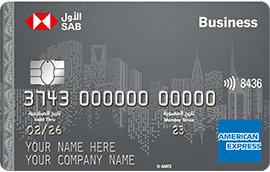Managing the money streams flowing in and out of a small business may be challenging, yet it's an ongoing and critical part of being a business owner. Cash flow impacts credit, bill payment arrangements, and the ability for business owners to pay themselves and their staff. From making careful decisions about a business’ accounts receivables practices to learning a few practical payment scheduling strategies, you may improve your business' cash flow with these seven tips.
One simple way to improve cash flow for a small business is to simply renegotiate your supplier/vendor contracts. Ask for more favorable rates and terms to lower your costs and lengthen your time to pay. This works especially well for businesses with a good credit score and a strong track record of paying suppliers on time and in full.
If the supplier isn’t willing to renegotiate mid-contract, schedule a follow-up 60 days prior to the contract renewal and prepare to negotiate. Look at how these payments fit into your total cash flow picture. In the meantime, research supplier competitors to see about getting a better deal.
Although this takes some careful planning, matching the dates of recurring payments with a business’ regular billing cycle could be a powerful tool for improving cash flow.
Review and adjust your accounts payable payment schedule to better match the business’ accounts receivable schedule. If possible, look for opportunities to spread payment dates throughout the month. Businesses paying several large bills such as rent, utilities, and payroll on the same day each month must ensure they have access to the money to do so or use credit to cover the payments. Otherwise, your business could incur costly fees and damage your business credit.
One key aspect of improving cash flow into a business involves finding ways to increase the frequency of receivables. This steady stream of income may then be used to meet expenses and accounts payable while minimizing the dependence on expensive credit such as overdrafts, or operating lines.
To collect money easily and more frequently invoice each sale immediately, instead of waiting to send out invoices at the end of the week, the biweekly period, or the month. Businesses that send out invoices right away see accounts receivables come in multiple times during a month, instead of all at once.
Encourage customers to pay early with a small discount. For example, offer a 3 percent discount for full payment of an invoice within seven days. Businesses that have ongoing work from regular clients could also offer a discounted service/sales contract for a set time period with set regular payments.
At the same time, discourage late payments by introducing a small penalty for late payments. This not only encourages responsible payment practices from your customers, but it also helps shorten your accounts receivables time frame — the time that passes between sending out invoices and receiving payment. Even better, combine the use of payment discounts and penalties with immediate invoicing to strengthen your cash flow more.
Businesses built on completing large projects may face even more challenges when it comes to smoothing cash flow if it takes weeks or months to complete a job. Instead of submitting your bill to the client upon project completion, ask for a deposit.
Long-term projects could also benefit from a periodic payment schedule. This will keep cash flowing into the business to purchase parts and supplies, as well as pay staff or subcontractors.
If your business has been in the habit of paying bills as soon as they arrive, consider a new approach. Review the terms of each account. Unless they specifically state that they are “due on receipt,” hold off on payment. Instead, pay bills on the stated due date to hold on to cash a little longer.
Unless a supplier offers a discount for early payment, business cash flow doesn’t benefit from paying a bill early. Instead, put money to work by keeping it in a bank account where it can multiply until the payment is due.
Pay your supplier/vendor bill on the due date with a business credit card. This lets small businesses extend supplier payments to whenever the next credit card payment comes due. However, make sure to keep an eye on your card’s grace period and billing cycle to avoid interest charges. Setting up a recurring payment to your card helps to create predictable cash flow and protect your credit as you keep up with regular payments.
Businesses may run into financial problems when cash doesn’t flow smoothly, making it difficult to meet the accounts payables that come due between large gaps in accounts receivables. This may cause serious issues because businesses without a strong cash flow might struggle to meet payments to service providers and suppliers for materials and parts, which keep businesses running smoothly. Take action today by reviewing your current practices and making adjustments to smooth out those uneven cash flow bumps.
This article is intended for general informational purposes only and does not constitute legal advice or an opinion on any issue. It shouldd not be regarded as comprehensive or a substitue for professional advice.

 Saudi Arabia
Saudi Arabia 











